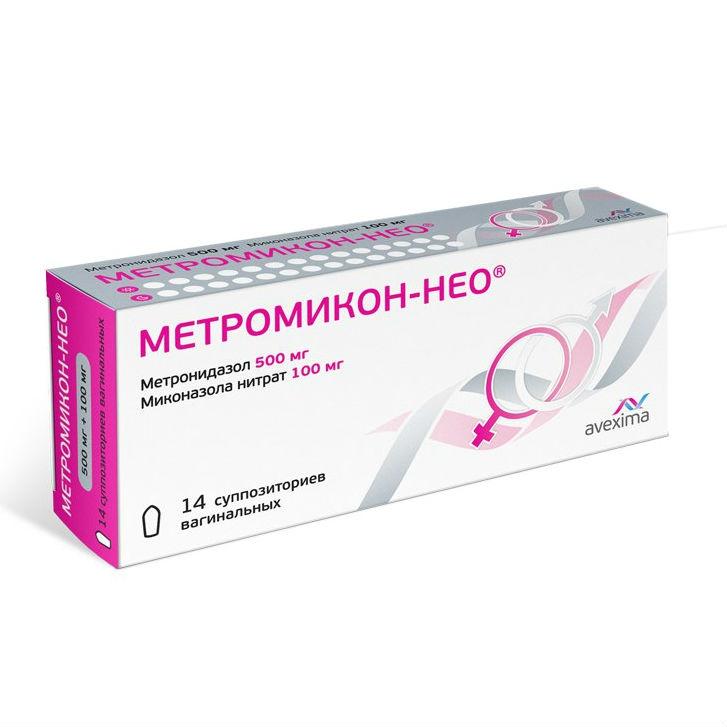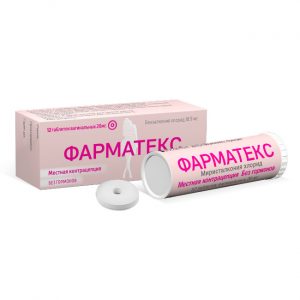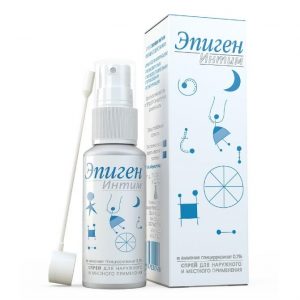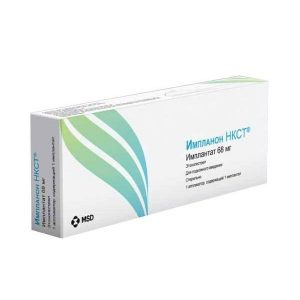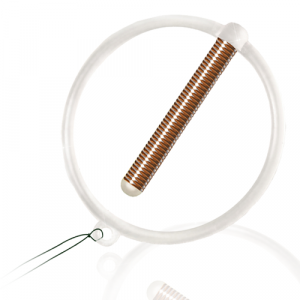Description
packaging 14 pcs
Pharmacological action
Metromicon-Neo is a combined drug with antiprotozoal, antifungal and antibacterial effects.
Metronidazole is active against Gardnerella vaginalis protozoa: Trichomonas vaginalis, Giardia intestinalis, Entamoeba histolytica anaerobic gram-negative bacteria: Bacteroides spp. (B. fragilis, B. distasounis, B. ovatus, B. thetaiotaomicron, B.vulgatus), Fusobacterium spp., Prevotella spp. (P. bivia, P. buccae, P. disiens) anaerobic gram-positive bacteria: Clostridium spp., Eubacterium spp. anaerobic gram-positive cocci: Peptococcus spp., Peptostreptococcus spp. Aerobic microorganisms and facultative anaerobes are resistant to metronidazole. The mechanism of action is due to the biochemical reduction of the 5-nitro group of metronidazole by intracellular transport proteins of anaerobic microorganisms and protozoa. The reduced 5-nitro group of metronidazole interacts with the DNA of the cell of microorganisms, inhibiting the synthesis of their nucleic acids, which leads to the death of bacteria.
The most sensitive to miconazole are dermatomycetes and yeast. It is active against the causative agent of colorful lichen (Malassezia furfur), the causative agents of some dermatomycoses (Candida albicans, Trichophyton, Epidermophyton floccosum, Microsporum). It is active against Dimorphons fungi, Cryptococcus neoformans, Aspergillus spp., Pityrosporum, Torulopsis glabrata, Pseudallescheria boydii of several gram-positive microorganisms, including staphylococci and streptococci. The fungicidal and fungistatic effect of miconazole nitrate is due to inhibition of the biosynthesis of ergosterol membrane and plasma membranes of fungi, a change in the lipid composition and permeability of the cell wall, causing the death of the fungal cell.
Indications
Vaginal infections: vaginal candidiasis
trichomonas vaginitis and vulvovaginitis, bacterial vaginosis
mixed vaginal infection.
Contraindications
hypersensitivity to drug components or other nitroimidazole derivatives
I trimester of pregnancy, lactation,
children under 18 years of age
in virgins.
Caution: with hepatic and renal failure, porphyria, impaired blood formation and diseases of the peripheral and central nervous system, diabetes mellitus, microcirculation disorders, during pregnancy (II and III trimesters).
Use during pregnancy and lactation
Prescribing is contraindicated in the first trimester of pregnancy. Use in the II and III trimesters of pregnancy is possible only if the potential benefit to the mother outweighs the potential risk to the fetus.
If it is necessary to prescribe the drug during lactation, breastfeeding should be discontinued, as metronidazole passes into breast milk. Breastfeeding can be resumed 24-48 hours after the end of treatment.
Composition
1 suppository contains:
Active substances: miconazole nitrate – 100 mg, metronidazole – 500 mg.
Excipients: semi-synthetic glycerides.
Dosage and Administration
Intravaginally.
Acute vaginitis, bacterial vaginosis: 1 suppository in the morning and at night for 7 consecutive days.
Chronic vaginitis: 1 suppository 1 time per day, immediately before bedtime, for 14 consecutive days.
Often recurrent vaginitis or in the absence of positive clinical dynamics during treatment with other methods: 1 suppository in the morning and at night for 14 days.
Having previously released the suppository from the contour packaging using scissors (cut the film along the contour of the suppository), insert it deep into the vagina.
Side effects
Local reactions: burning, itching, irritation of the vaginal mucosa and increased swelling. Due to inflammation of the vaginal mucosa with vaginitis, irritation may intensify after the introduction of the first suppository or by the third day of treatment. These complications quickly disappear after discontinuation of treatment.
From the gastrointestinal tract: pain or cramping in the abdomen, metallic taste, dry mouth, constipation, diarrhea, loss of appetite, nausea, vomiting.
From the nervous system: headache, motor disorders (ataxia), dizziness, psycho-emotional disorders, convulsions.
From the hemopoietic system: leukopenia.
Allergic reactions: skin rashes, including urticaria.
Drug interaction
In connection with the intake of metronidazole in the system blood flow, the following interactions may be noted: the effect of indirect anticoagulants increases.
Disulfiram: CNS abnormalities (mental reactions) may not be observed, metronidazole should be administered to patients, who have been taking disulfiram for the past 2 weeks.
Phenytoin: The concentration of phenytoin in the blood increases and the concentration of metronidazole in the blood decreases.
Lithium preparations: may increase their toxicity.
Phenobarbital: Decreases the concentration of metronidazole in the blood.
Cimetidine: may increase the concentration of metronidazole in the blood.
Astemizole and terfenadine: metronidazole and miconazole inhibit the metabolism of these drugs and increase blood plasma concentrations.
Ethanol: Interaction of metronidazole with ethanol causes disulfiram-like reactions.
overdose
No dosage of overdose has been detected with the recommended doses due to low absorption of the drug.
Possible symptoms: nausea ,, vomiting, abdominal pain, diarrhea, itching, metallic taste in the mouth, ataxia, dizziness, paraesthesia, peripheral neuropathy (with prolonged use in high doses), convulsions, leukopenia, dark staining with urinary metrosolysis ).
Symptoms of miconazole overdose were not detected.
Treatment: symptomatic and supportive therapy, with accidental ingestion – gastric lavage.
Storage conditions
Store in a dry, dark place at a temperature of 15-25o C.
Expiration
3 years.
pharmacy terms and conditions
prescription s171fff4176f1 pfp1bf4f1dfp4f1dfp4fpfpfcfcfcfc
Prescription
Possible product names
METROMIKON NEO SUPP. VAG. 500MG + 100MG No. 14
Metromicon Neo suppoz. vagina. 500mg + 100mg No. 14
METROMIKON-NEO 0.5 + 0.1 N14 SUPP VAG
Metromikon-Neo 500mg + 100mg supp. vaginal X14
metromicon-neo supp. vagina. 500mg + 100mg N14 Moldova
Anzhero-Sudzhenskiy KhFZ, Russia
